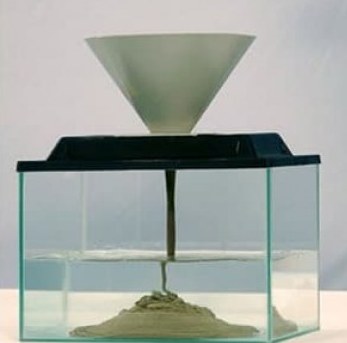
For most cements to set hard the amount of water added to them has to be just right. So how can Portland cement set underwater when used to build a dam or bridge?
Cement sets, not because the water it is mixed with evaporates, but because if a chemical reaction with water. Portland cement, which is used underwater, actually controls the amount of water that can react with it because of the way its grains are made up, so it does not matter how much water is added. It was patented in 1824 by the English engineer Joseph Aspdin.
He mixed limestone or chalk (calcium carbonate) with clay (aluminium silicate) and heated them until they combined to create two forms of calcium silicate. One type, tricalcium silicate, reacts with water quite quickly. The other type, dicalcium silicate, reacts more slowly, producing the final hardness after a month or more.
When water reacts with the outside of the grains of cement, the tricalcium silicate forms a coating that limits the amount of water that can seep through. This stops the cement becoming too diluted.
Portland cement’s qualities of strength and water resistance are still used to build the concrete foundations of most structures that are built in water, such as lighthouses, port installations, dams, oil rigs and bridges. Concrete is poured down large tubes onto the seabed or the bottom of a river, where it sets.
Picture Credit : Google




